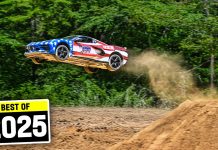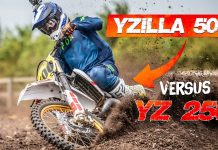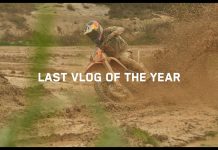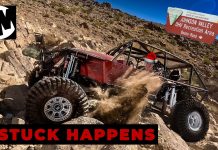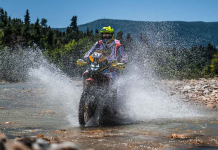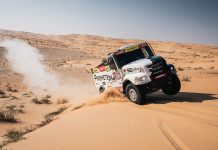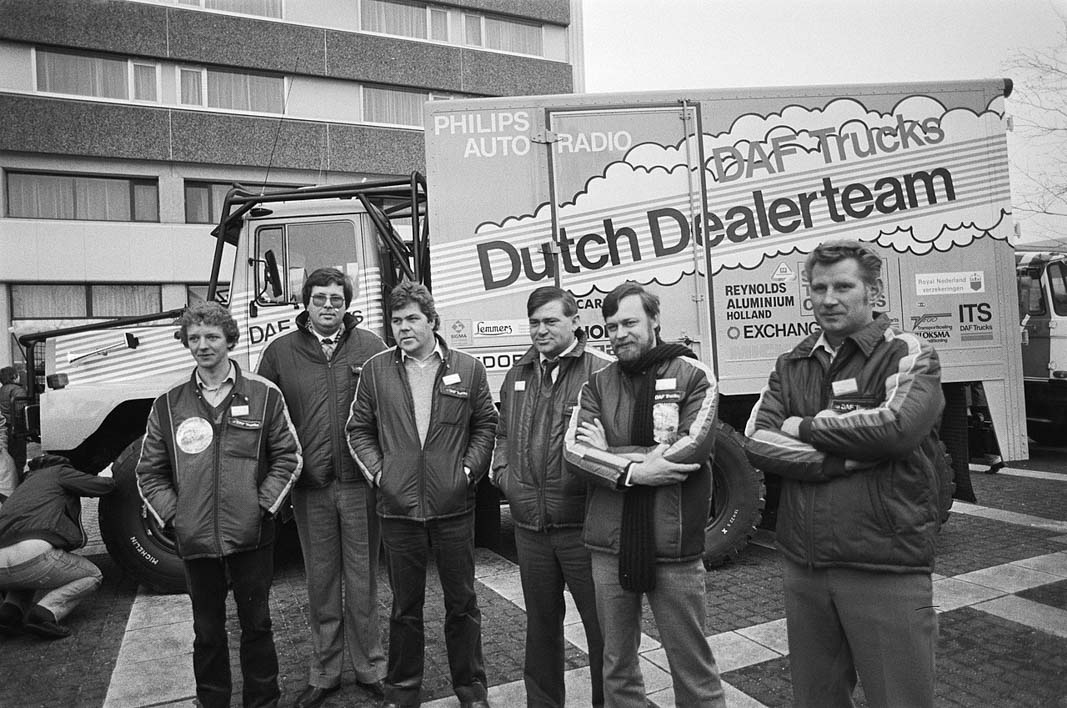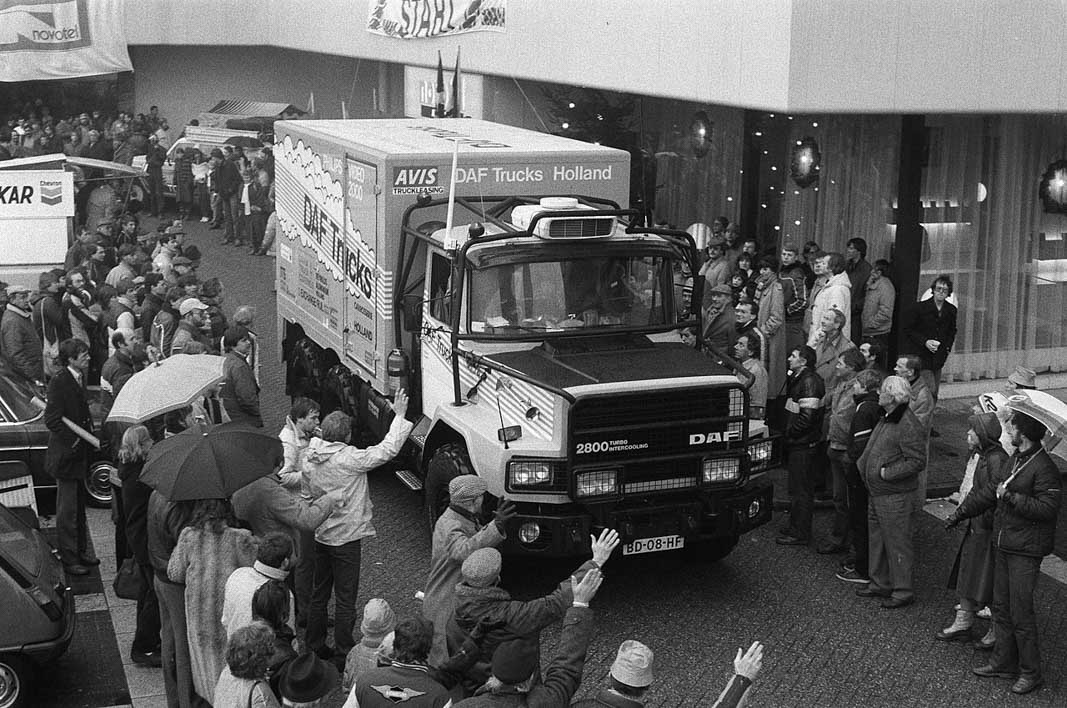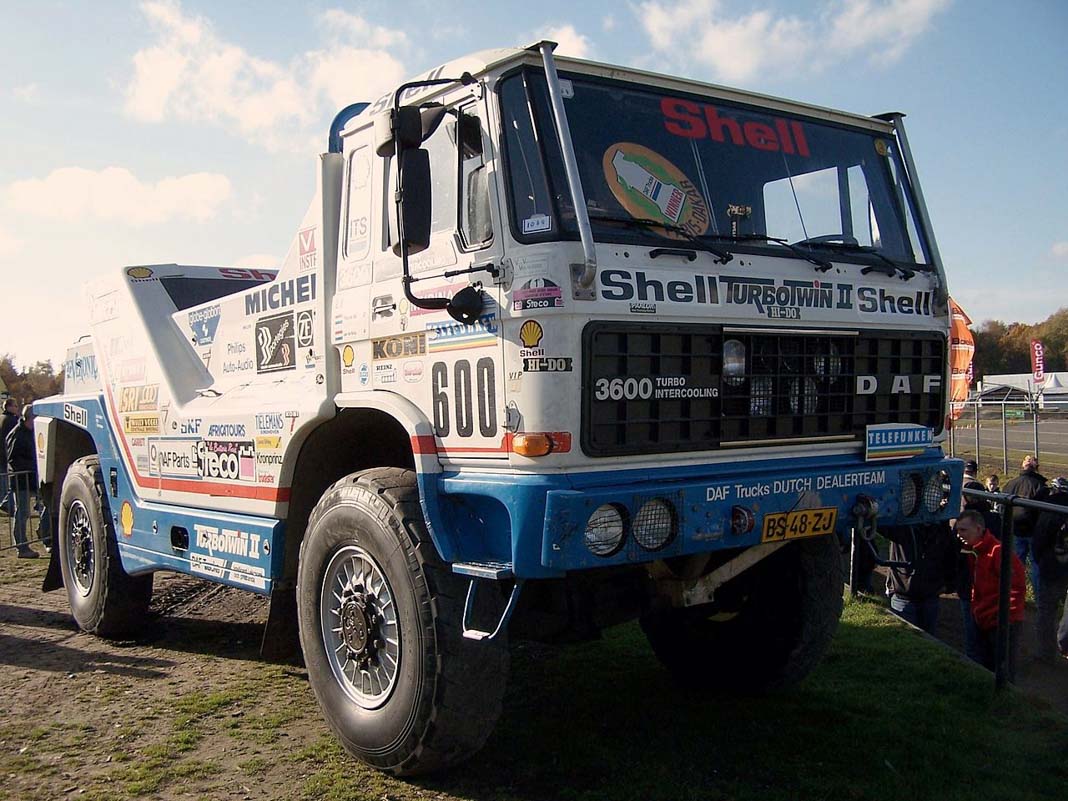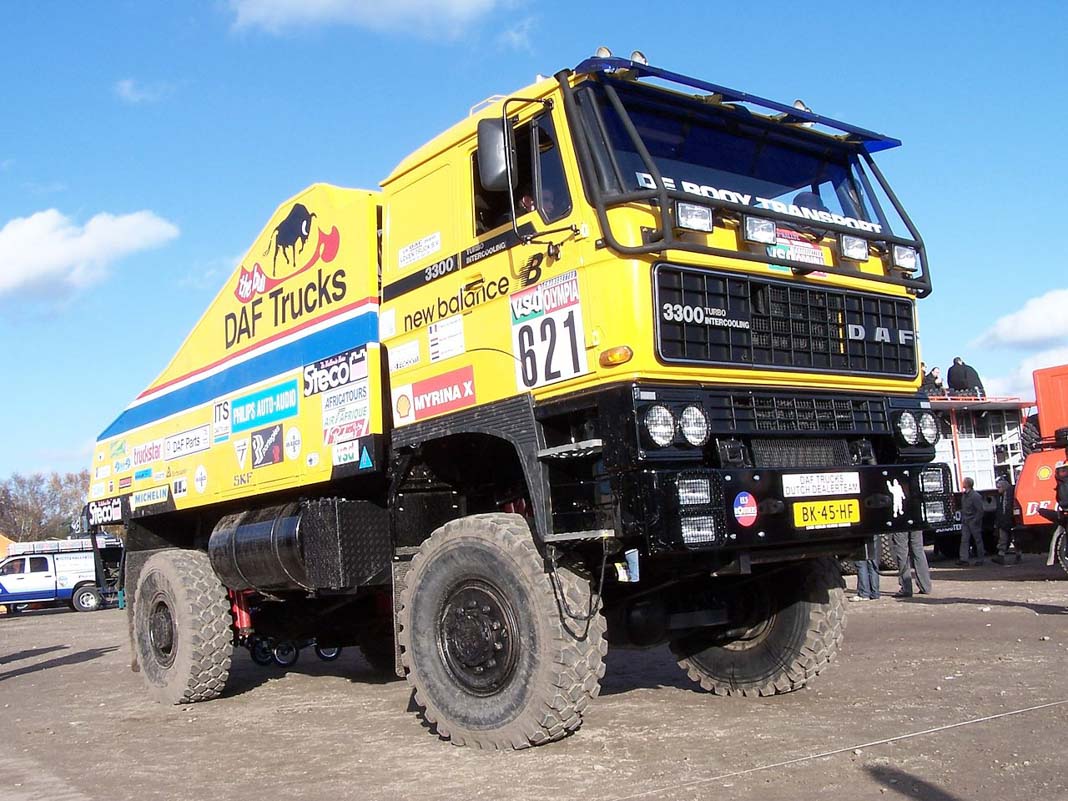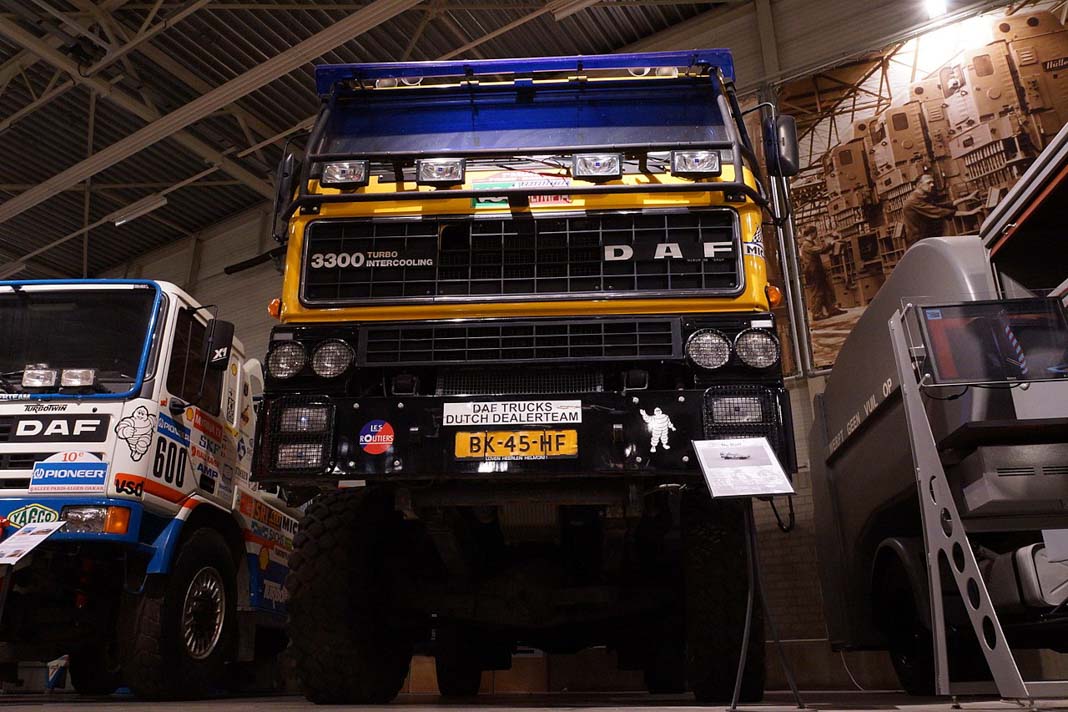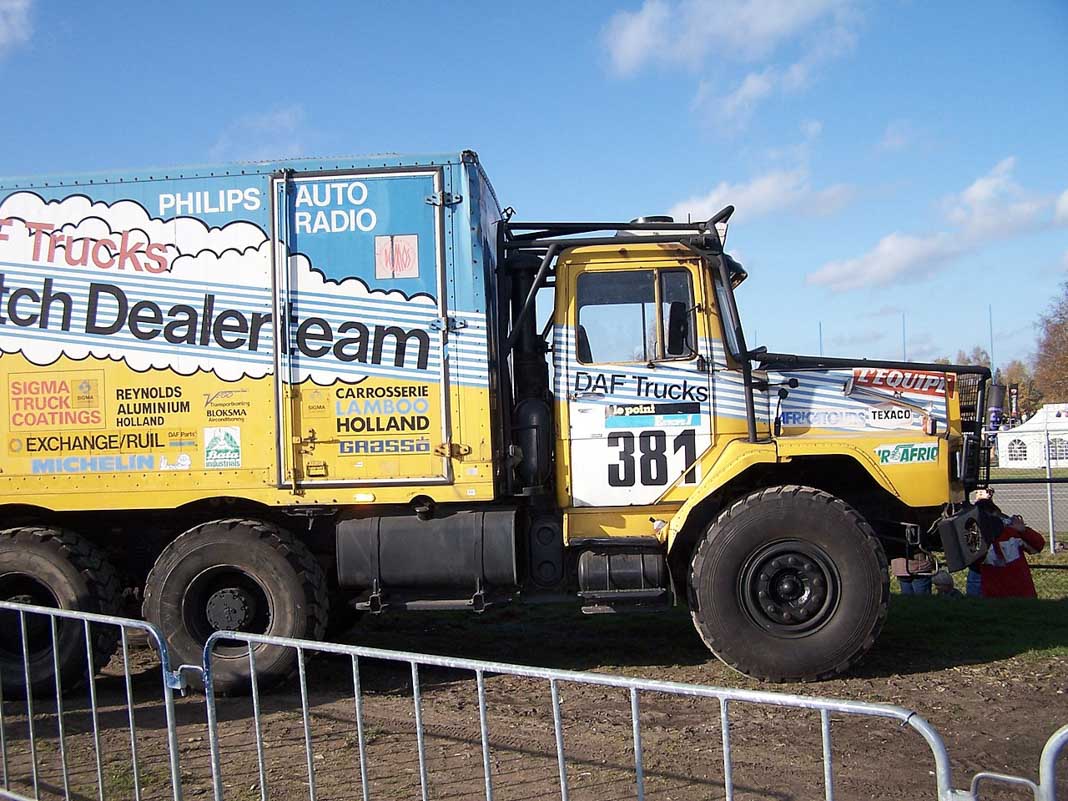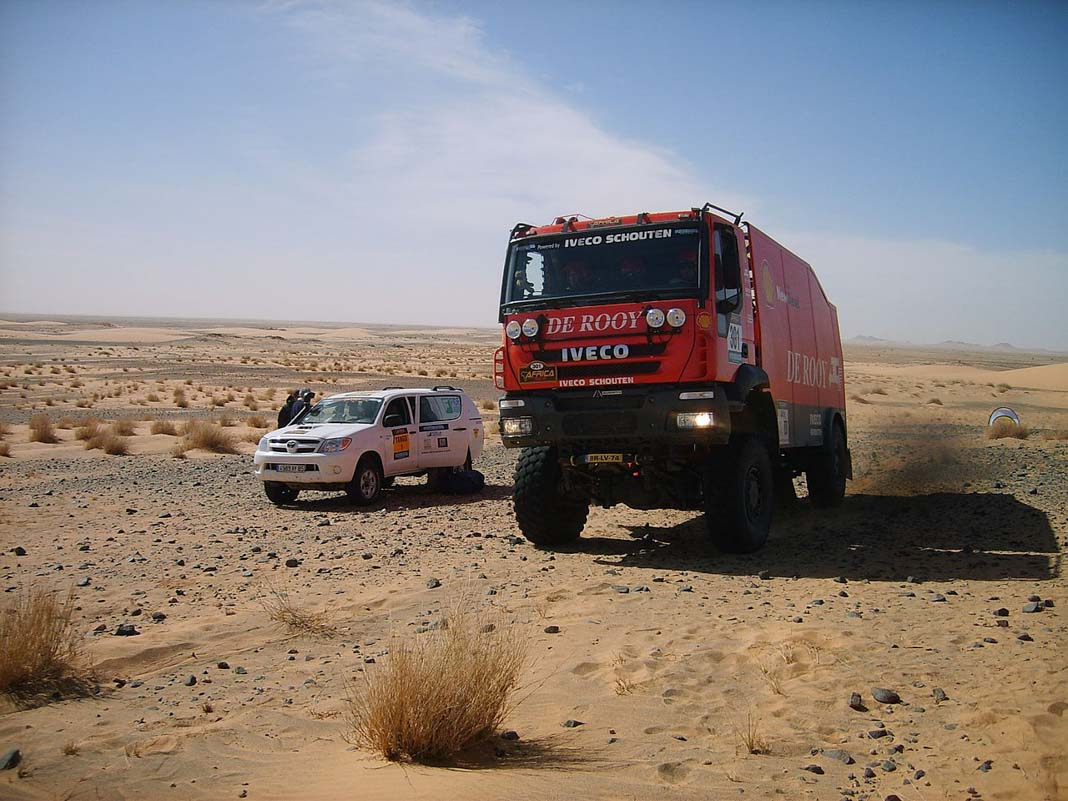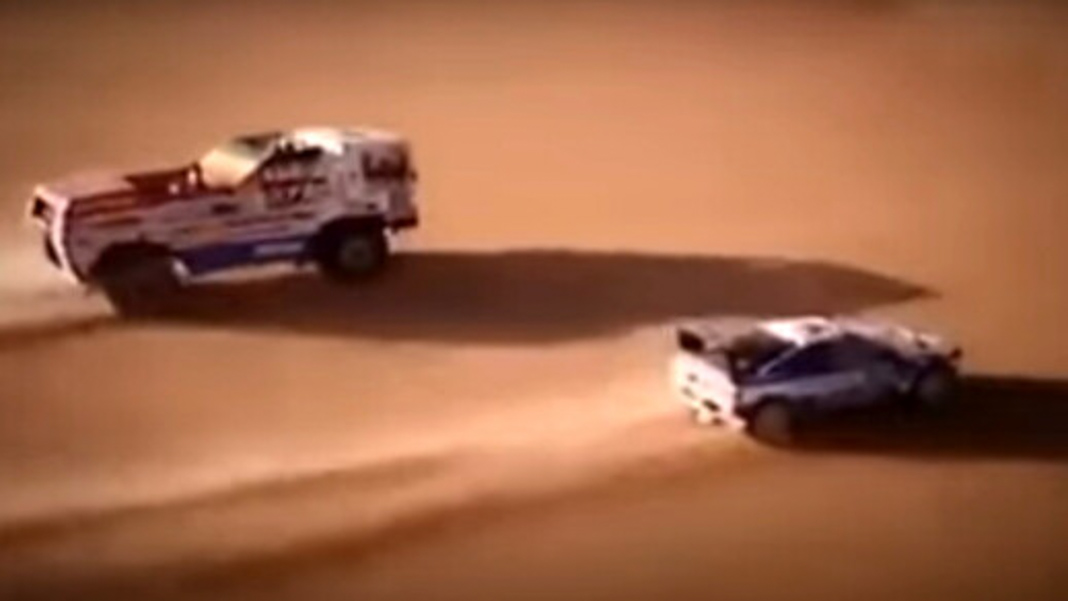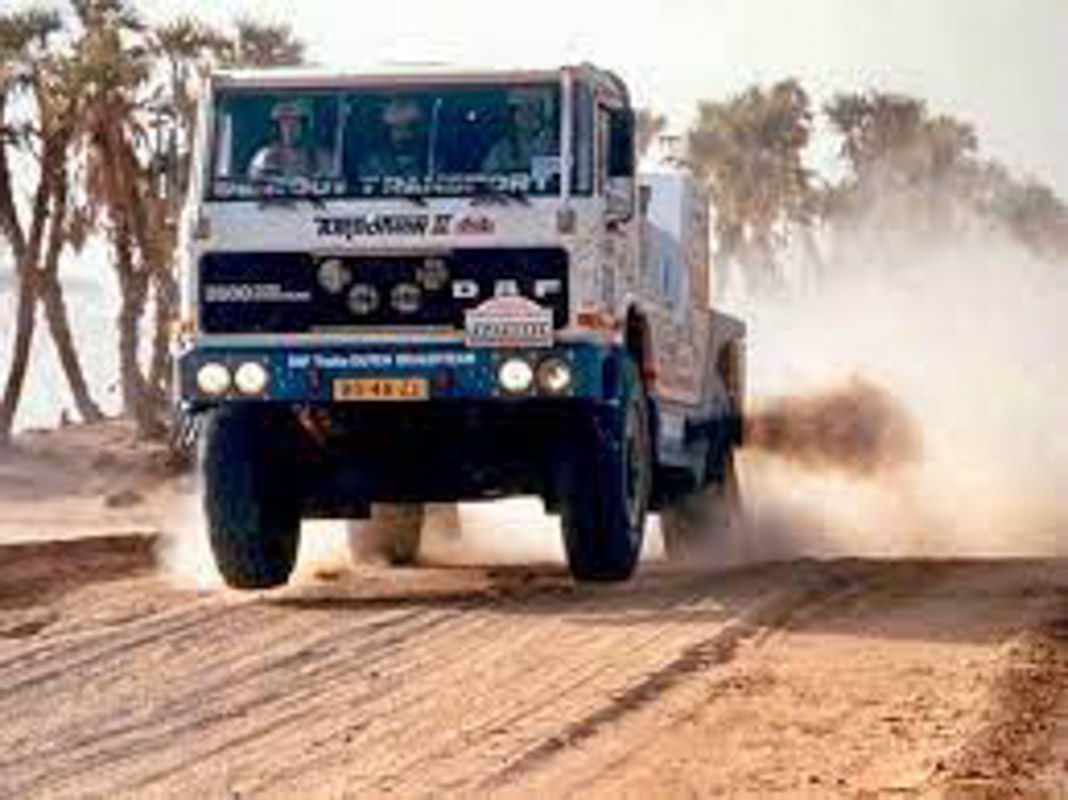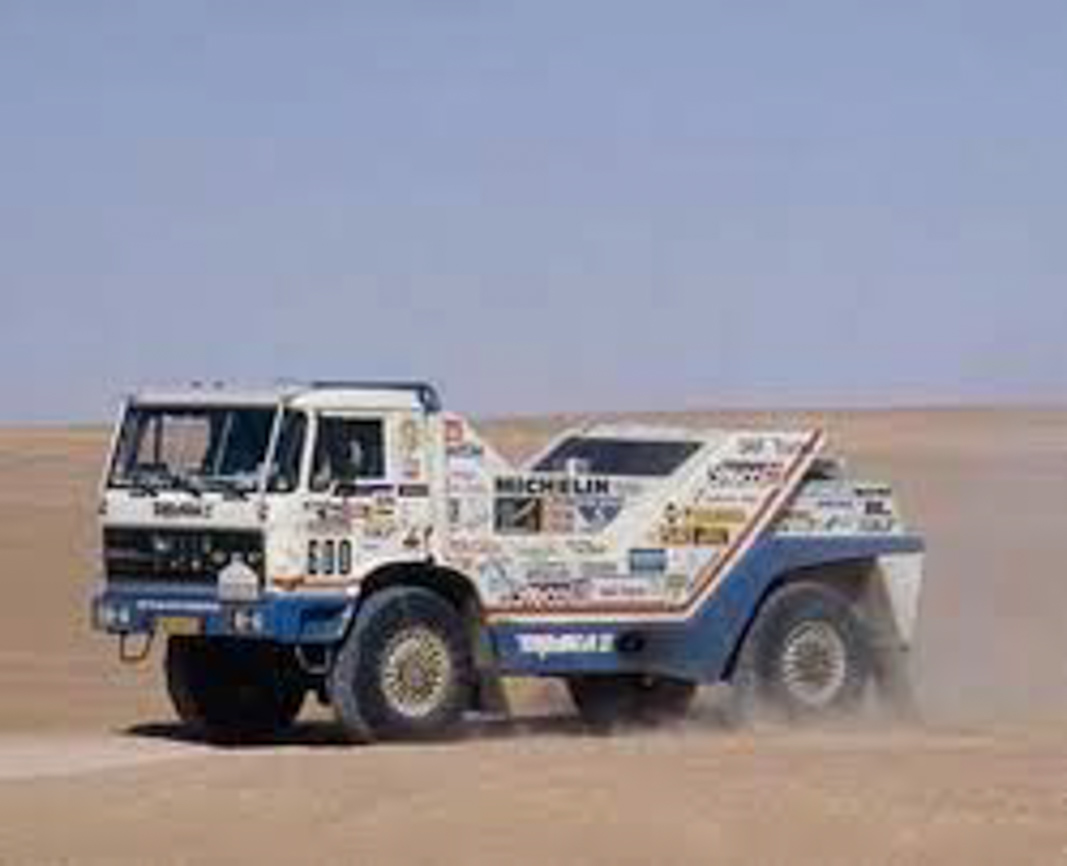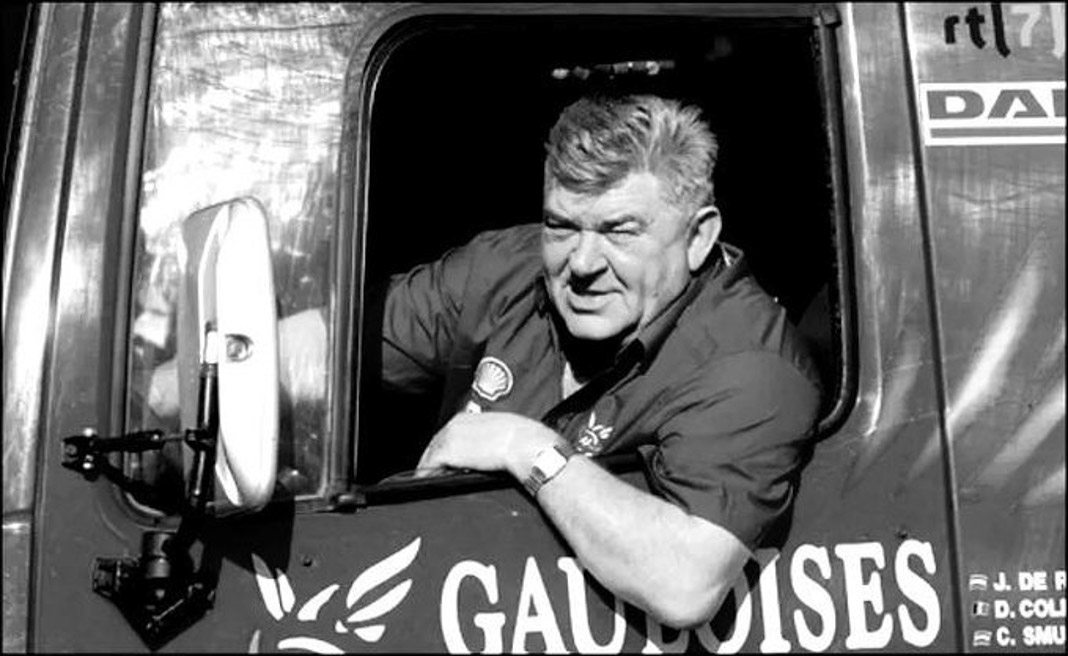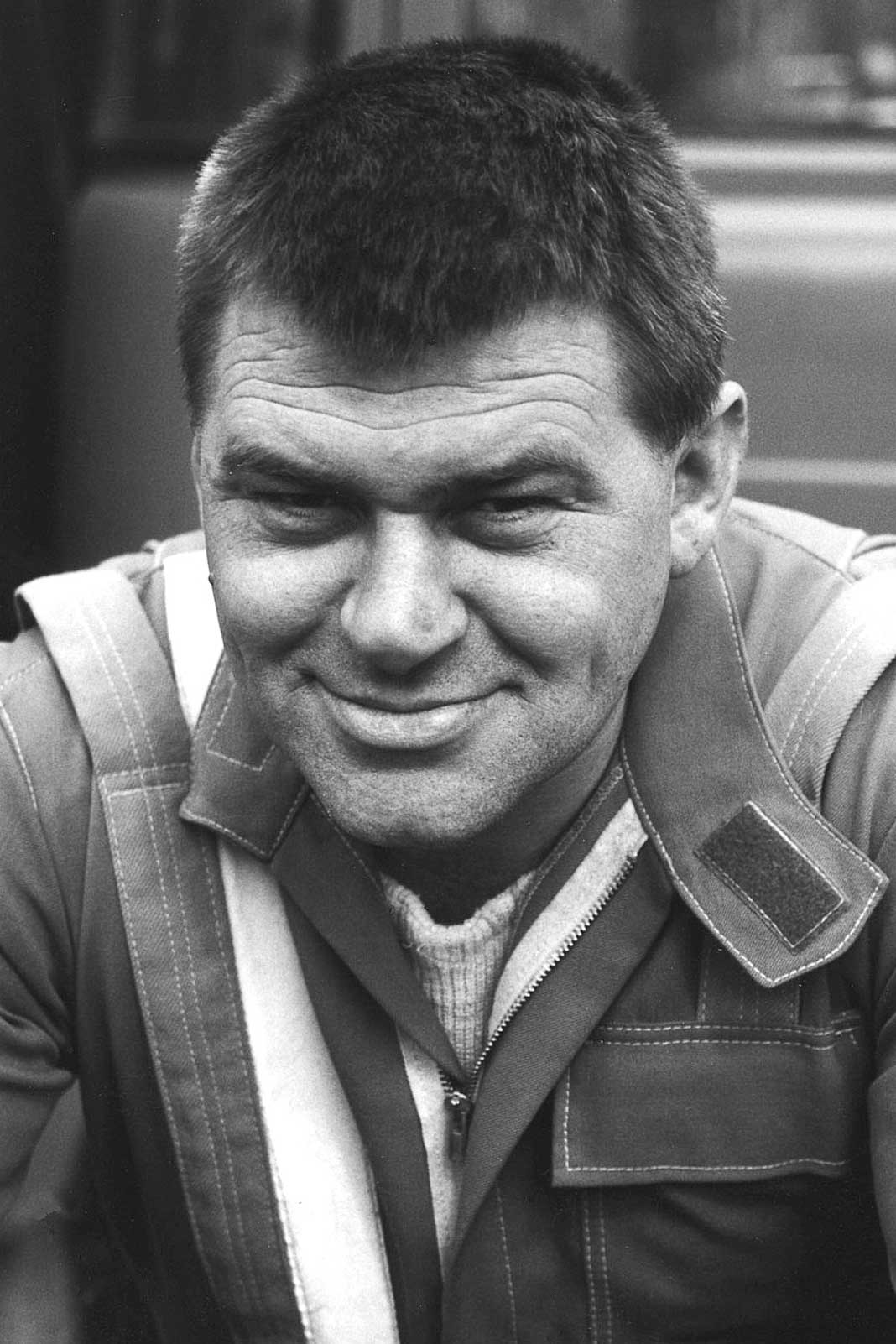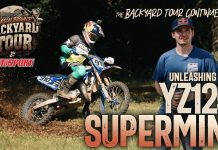A Tribute to Jan de Rooy
HINWEIS: Das Video ist noch deaktiviert, damit keine unerwünschte Datenübertragung zu Youtube stattfindet. Zur Aktivierung bitte auf das Vorschaubild/Video-Link klicken. Damit werden Daten übermittelt, zu deren Art, Umfang und Verwendungszweck wir keineAuskünfte geben können.
NOTE: The video is still deactivated so that no unwanted data transfer to YouTube takes place. To activate, please click on the preview image / video link. This transmits data about the type, extent and purpose of which we cannot provide any information.
Die ultimative Dakar-Legende: Nach einem sehr kurzen Krankenbett schlief Jan de Rooy friedlich ein und ist nun wieder mit seiner großen Liebe Annie vereint. Er durfte 80 Jahre alt werden. Seit 65 Jahren arbeitet er für SEINE Transportfirma De Rooy, die letztes Jahr ihr 100-jähriges Jubiläum feierte. RUHE IN FRIEDEN!

HISTORIE
Jan de Rooy (* 19. Februar 1943 in Eindhoven † 30. Januar 2024 in Middelbeers), manchmal aber auch Jan de Rooij (siehe dazu ij) geschrieben, war ein niederländischer Unternehmer und Rennfahrer. De Rooy wurde vor allem durch seine ungezählten Erfolge im Motorsport Rallycross bekannt und später durch seine zahlreichen Teilnahmen als tollkühner Truck-Pilot beim Africa Eco Race und der Rallye Dakar. Sein Spitzname in der Rallycross-Szene war „Ome Jan“ (deutsch „Onkel Jan“), bei der „Dakar“ wurde er „L’ours“ (deutsch „der Bär“) genannt. Nachdem de Rooy lange in Belgien gelebt hatte, wohnte er zuletzt in Middelbeers, einem Ortsteil von Oirschot. Er war einmal verheiratet und hatte mit seiner am 22. Oktober 2010 verstorbenen Frau Annie zwei Töchter und einen Sohn, Gerard de Rooy, der ebenfalls an Marathon-Rallyes teilnimmt. Ein weiterer Rallye-Raid-Fahrer, Hans Stacey, ist ein Neffe von Jan de Rooy.
Nachdem Jan de Rooy schon im Alter von 16 Jahren erfolgreich an Motocross-Rennen teilgenommen hatte, begann er sich Ende der 1960er für Autorennen zu interessieren und entdeckte 1969 den im selben Jahr aus Großbritannien in die Niederlande „importierten“ Rennsport Rallycross für sich. Sein erstes Rennen dieser Disziplin bestritt er am 4. Oktober 1969 in Elst mit einem Mini Cooper. Dabei beeindruckte er die Vorstandsmitglieder der Zuid Nederlandse Autosport Vereniging (ZAV) mit seinen Fahrkünsten und seinem Draufgängertum so sehr, dass sie ihn noch vor Ort dazu überredeten, zukünftig unter ihrer Fahne an weiteren Rennen teilzunehmen. In seinen ersten Autosport-Jahren ging er ausschließlich mit den gerne als „Rentner- und Hausfrauen-Wägelchen“ verspotteten Autos der Marke DAF an den Start. Durch zahlreiche Erfolge trug er wesentlich dazu bei, dass die Fahrzeuge der niederländischen Firma zumindest im Motorsport viel Anerkennung fanden.
Zwischen 1970 und 1982 wurde Jan de Rooy zu einer niederländischen Rallycross-Legende, – aber auch, zusammen mit seinem gleichermaßen verwegenen und gnadenlosen Bruder Harry de Rooy, zum Alptraum der internationalen Rennfahrerkollegen. In kürzester Zeit war europaweit immer wieder von den „schrecklichen De-Rooy-Brüdern“ („The terrible De Rooy brothers“) die Rede. Dazu trug auch bei, dass ihre durch eine F3-Sportvariomatic allradangetriebenen DAF 555 Coupés (die dritte 5 stand für die Gruppe 5 laut Rennwagen-Reglement der FIA) mit über 200 PS starken Ford-BDA-Motoren Anfang der 1970er dermaßen überlegen waren, dass die de Rooys damit fast schon Kreise um ihre Gegner drehen konnten. Obwohl sie fast immer erst 5 oder 10 Sekunden nach ihren mit zweiradgetriebenen Autos fahrenden Konkurrenten starten durften, oder diese sogenannte „4×4-Zeitstrafe“ (4WD penalty) auf ihre gefahrene Zeit aufgeschlagen wurde, gewannen sie fast jedes der bestrittenen Rennen, wobei Jan zumeist etwas erfolgreicher als der ältere Harry war. Für 1973 und 1974 mussten die de Rooys ihre DAF-Rennwagen von Allradantrieb auf Heckantrieb umstellen, weil ein neues Reglement alle 4×4-Autos aus dem Rallycross-Sport verbannte. Nach seinen Jahren mit DAF fuhr Jan de Rooy 1978 ohne nennenswerte Erfolge einen Toyota Corolla, 1979 und 1980 erfolgreich einen Ford Escort RS1800 sowie 1982 einen Audi quattro im Rallycross, bevor er sich Ende 1982 ganz aus diesem Motorsport zurückzog.
Jan de Rooys Rallycross-Erfolge
- 1970: Nat. und Int. Niederländischer Rallycross-Meister mit DAF 55
- 1971: Nat. und Int. Niederländischer Rallycross-Meister mit DAF 555 Coupé 4×4 (Gordini- und Ford-TwinCam-Motor)
- 1972: Int. Niederländischer Rallycross-Meister mit DAF 555 Coupé 4×4 (Ford-BDA-Motor)
- 1973: Int. Niederländischer Rallycross-Meister mit DAF 55 Coupé (Ford-BDA-Motor)
- 1973: 4. der FIA-Rallycross-Europameisterschaft (Gesamtergebnis) mit DAF 55 Coupé (Ford-BDA-Motor)
- 1974: 5. der FIA-Rallycross-Europameisterschaft (Gesamtergebnis) mit DAF 55 Coupé und DAF 66M (jeweils mit Ford-BDA-Motor)
- 1979: Int. Niederländischer Rallycross-Meister mit Ford Escort RS1800
- 1979: 2. der FIA-Rallycross-Europameisterschaft (Tourenwagen-Kategorie) mit Ford Escort RS1800
- 1980: Nat. Niederländischer Rallycross-Cup-Gewinner (für Fahrer mit internationaler Lizenz) mit Ford Escort RS1800
- 1982: 3. der FIA-Rallycross-Europameisterschaft (Division 2) mit Audi quattro
Paris-Dakar (1982–1988)
Ab 1982 nahm Jan de Rooy am Wüstenrennen Paris-Dakar teil. Im Jahre 1984 ging der Niederländer mit einem Truck mit doppelter Fahrerkabine an den Start, wobei pro Kabine ein Motor zur Verfügung stand. Einer davon trieb die Vorder- und der andere die Hinterräder an. De Rooy fiel zwar vorzeitig aus, konnte aber eindrücklich unter Beweis stellen, dass er und DAF zukünftig Siegeslorbeeren zu ernten gedachten.
1986 kam de Rooy mit dem ersten sogenannten TurboTwin nach Afrika. Darin standen ihm nicht nur zwei Motoren zur Verfügung, durch Turbolader wurde deren Leistung auch noch erheblich gesteigert. Es sah ganz danach aus, als ob der DAF-Pilot die „Dakar“ gewinnen könnte, doch wurde er noch kurz vor dem Ziel von der Rennleitung disqualifiziert. Im Jahr darauf war de Rooy nicht mehr zu stoppen und am Ende konnte er sich den Sieg der Truck-Kategorie an die Fahnen heften.
Nachdem DAF 1987 den Sieg bei den Trucks errungen hatte, wollten die Niederländer noch höher hinaus und bereiteten sich darauf vor, vielleicht sogar den Gesamtsieg bei der Rallye Paris-Dakar erobern zu können. Für 1988 wurden zwei brandneue TurboTwins aufgebaut, der X1 und der X2. Beide Achsen hatten einen eigenen Motor mit gut 600 PS, wodurch de Rooy und seinem Teamkollegen Theo van de Rijt jeweils 1200 PS an Leistung zur Verfügung standen und die Trucks eine Höchstgeschwindigkeit von weit über 200 km/h erreichen konnten. Jan de Rooy war mehrfach in der Lage, selbst die schnellsten Rennwagen zu überholen. Die Fernsehbilder seines spektakulären Zweikampfes mit dem finnischen Peugeot-Werksfahrer Ari Vatanen im Peugeot 405 bei rund 200 km/h im Wüstensand der Ténéré gingen um die Welt. Während sich de Rooy zeitweilig auf dem dritten Rang des Gesamtklassements behaupten konnte, hatte die Besatzung des zweiten TurboTwin bei hoher Geschwindigkeit einen fatalen Unfall, dem Van-de-Rijt-Kopilot Kees van Loevezijn zum Opfer fiel. Unmittelbar nach dessen Tod zog sich das DAF-Werk zuerst aus dem Wettbewerb und danach aus dem Rallye-Raid-Sport zurück, während de Rooy seine Karriere beendete.
Rallye Dakar und Africa Eco Race (ab 2002)
Nach einer 13-jährigen Rennsport-Abstinenz und fortwährender Aufforderungen seines Sohnes Gerard de Rooy, es doch endlich wieder einmal zu versuchen, entschloss sich Jan de Rooy 2001, seinem alten Hobby „im Sandkasten spielen zu gehen“, wie er es selbst gerne nennt, erneut zu frönen. Seit 2002 nehmen Vater und Sohn gemeinsam, inzwischen allerdings als Fahrer verschiedener Trucks, an der „Dakar“ teil. Für die Rallye Dakar 2006 wurden beide nicht zum Start zugelassen, weil es Probleme mit der FIA-Homologation ihrer DAF-Trucks gab. Um ein gleichartiges Fiasko zu vermeiden, gingen sie 2007 mit Trucks der niederländischen Marke GINAF ins Rennen, fielen aber beide nach technischen Problemen frühzeitig aus. Auch für die 2008er-Auflage der „Dakar“ bauten Vater und Sohn de Rooy erneut GINAF-Trucks auf, die diesmal jedoch mit Iveco-Schouten-Motoren statt DAF-Triebwerken ausgerüstet sind. Die Firma GINAF in Veenendaal baut in Eigenregie mit diversen DAF-Komponenten u. a. allradangetriebene Trucks und sonstige Spezialfahrzeuge. Ab 2009 wechselte Jan de Rooy von der Rallye Dakar zum Africa Eco Race und gewann dort 2009 die LKW-Wertung.
A Tribute to Jan de Rooy – Part 2
NOTE: The video is still deactivated so that no unwanted data transfer to YouTube takes place. To activate, please click on the preview image / video link. This transmits data about the type, extent and purpose of which we cannot provide any information.
Die Dakar-Trucks des Jan de Rooy
1982: DAF NTT2800
1983: DAF FA3300 4×4 „De Koffer“
1984: DAF F3300 4×4 (mit doppelter Fahrerkabine)
1985: DAF F3300 4×4 „The Bull“
1986: DAF FAV 3600 4×4 TurboTwin
1987: DAF FAV 3600 4×4 TurboTwin II
1988: DAF 95 4×4 TurboTwin X1
1989–2001: keine Dakar-Teilnahme
2002: DAF FAV CF85 4×4
2003: DAF FAV CF85 4×4
2004: DAF FAV CF75 4×4
2005: DAF FAV CF75 4×4
2006: DAF FAV CF75 4×4
2007: GINAF X 2222
2008: GINAF X 2223
![]()
THE ULTIMATE DAKAR LEGEND: After a very short sick bed, Jan de Rooy fell asleep peacefully and reunited with great love Annie. He’s allowed to turn 80. He has worked for HIS Transport company De Rooy for 65 years, which celebrated its 100th anniversary last year. R.I.P!

HISTORIE
Jan de Rooy (born February 19, 1943 in Eindhoven † January 30, 2024 in Middelbeers), sometimes also spelled Jan de Rooij (see ij), was a Dutch entrepreneur and racing driver. De Rooy was best known for his countless successes in motorsport rallycross and later for his numerous participations as a daring truck driver in the Africa Eco Race and the Dakar Rally. His nickname in the rallycross scene was “Ome Jan” (German “Uncle Jan”), in the “Dakar” he was called “L’ours” (German “the bear”). After living in Belgium for a long time, de Rooy last lived in Middelbeers, a district of Oirschot. He was married once and had two daughters with his wife Annie, who died on October 22, 2010, and a son, Gerard de Rooy, who also competes in marathon rallies. Another rally raid driver, Hans Stacey, is a nephew of Jan de Rooy.
After successfully taking part in motocross races at the age of 16, Jan de Rooy became interested in car racing at the end of the 1960s and in 1969 discovered rallycross, which was “imported” to the Netherlands from Great Britain in the same year. He contested his first race in this discipline on October 4, 1969 in Elst with a Mini Cooper. He impressed the board members of the Zuid Nederlandse Autosport Vereniging (ZAV) so much with his driving skills and his daredevilry that they persuaded him to take part in further races under their flag in the future. In his first years in motorsport, he only competed in the DAF brand cars, which were often derided as “pensioner and housewife cars”. Through numerous successes, he made a significant contribution to the fact that the Dutch company’s vehicles received a lot of recognition, at least in motorsport.
Between 1970 and 1982, Jan de Rooy became a Dutch rallycross legend – but also, together with his equally daring and merciless brother Harry de Rooy, a nightmare for his international racing colleagues. In a very short time, people across Europe were talking about the “terrible De Rooy brothers”. This was also helped by the fact that their DAF 555 Coupés, all-wheel drive with an F3 Sport Variomatic (the third 5 stood for Group 5 according to the FIA racing car regulations) with over 200 hp Ford BDA engines were so superior in the early 1970s that which allowed de Rooys to almost run circles around their opponents. Although they were almost always only allowed to start 5 or 10 seconds after their competitors driving two-wheel drive cars, or this so-called “4×4 time penalty” (4WD penalty) was added to their time, they won almost every race they contested, with Jan mostly winning a little was more successful than the older Harry. For 1973 and 1974, the de Rooys had to convert their DAF racing cars from all-wheel drive to rear-wheel drive because new regulations banned all 4×4 cars from rallycross. After his years with DAF, Jan de Rooy drove a Toyota Corolla in 1978 without any notable successes, successfully drove a Ford Escort RS1800 in 1979 and 1980 and an Audi quattro in rallycross in 1982 before withdrawing completely from this motorsport at the end of 1982.
Jan de Rooys Rallycross victories
- 1970: Nat. and Int. Dutch rallycross champion with DAF 55
- 1971: Nat. and Int. Dutch rallycross champion with DAF 555 Coupé 4×4 (Gordini and Ford TwinCam engine)
- 1972: Int. Dutch rallycross champion with DAF 555 Coupé 4×4 (Ford BDA engine)
- 1973: Int. Dutch rallycross champion with DAF 55 Coupé (Ford BDA engine)
- 1973: 4th in the FIA European Rallycross Championship (overall result) with DAF 55 Coupé (Ford BDA engine)
- 1974: 5th place in the FIA European Rallycross Championship (overall result) with DAF 55 Coupé and DAF 66M (each with Ford BDA engine)
- 1979: Int. Dutch rallycross champion with Ford Escort RS1800
- 1979: 2nd place in the FIA European Rallycross Championship (touring car category) with a Ford Escort RS1800
- 1980: Nat. Dutch Rallycross Cup winner (for drivers with international license) with Ford Escort RS1800
- 1982: 3rd place in the FIA European Rallycross Championship (Division 2) with Audi quattro
Paris-Dakar (1982–1988)
From 1982, Jan de Rooy took part in the Paris-Dakar desert race. In 1984, the Dutchman started with a truck with a double driver’s cab, with one engine per cab. One of them drove the front wheels and the other the rear wheels. Although De Rooy dropped out early, he was able to impressively prove that he and DAF intended to reap the rewards of victory in the future.
In 1986, de Rooy came to Africa with the first so-called TurboTwin. Not only did he have two engines at his disposal, but turbochargers also significantly increased their performance. It looked as if the DAF driver could win the “Dakar”, but he was disqualified by the race management shortly before the finish. The following year, de Rooy was unstoppable and in the end he was able to claim victory in the truck category.
After DAF won the trucks in 1987, the Dutch wanted to go even higher and prepared to perhaps even take overall victory in the Paris-Dakar Rally. For 1988 two brand new TurboTwins were built, the X1 and the X2. Both axles had their own engine with a good 600 hp, which meant that de Rooy and his teammate Theo van de Rijt each had 1,200 hp of power available and the trucks could reach a top speed of well over 200 km/h. Jan de Rooy was able to overtake even the fastest racing cars on several occasions. The television images of his spectacular duel with the Finnish Peugeot works driver Ari Vatanen in the Peugeot 405 at around 200 km/h in the desert sand of the Ténéré went around the world. While de Rooy was temporarily able to hold on to third place in the overall classification, the crew of the second TurboTwin had a fatal accident at high speed, in which Van de Rijt’s co-pilot Kees van Loevezijn fell victim. Immediately after his death, the DAF factory withdrew first from competition and then from rally raid racing, while de Rooy ended his career.
Rallye Dakar & Africa Eco Race (from 2002)
After a 13-year abstinence from racing and constant requests from his son Gerard de Rooy to finally try it again, Jan de Rooy decided in 2001 to follow his old hobby of “playing in the sandpit”, as he likes to call it himself. to indulge again. Father and son have been taking part in the “Dakar” together since 2002, although now as drivers of different trucks. Both were not allowed to take part in the 2006 Dakar Rally because there were problems with the FIA homologation of their DAF trucks. To avoid a similar fiasco, they entered the race in 2007 with trucks from the Dutch brand GINAF, but both dropped out early after technical problems. Father and son de Rooy once again built GINAF trucks for the 2008 edition of the “Dakar”, but this time they are equipped with Iveco Schouten engines instead of DAF engines. The GINAF company in Veenendaal builds itself with various DAF components, including: four-wheel drive trucks and other special vehicles. From 2009, Jan de Rooy switched from the Dakar Rally to the Africa Eco Race and won the truck classification there in 2009.
A Tribute to Jan de Rooy – Part 2
NOTE: The video is still deactivated so that no unwanted data transfer to YouTube takes place. To activate, please click on the preview image / video link. This transmits data about the type, extent and purpose of which we cannot provide any information.
The Dakar-Trucks of Jan de Rooy
1982: DAF NTT2800
1983: DAF FA3300 4×4 „De Koffer“
1984: DAF F3300 4×4 (double cabin)
1985: DAF F3300 4×4 „The Bull“
1986: DAF FAV 3600 4×4 TurboTwin
1987: DAF FAV 3600 4×4 TurboTwin II
1988: DAF 95 4×4 TurboTwin X1
1989–2001: no Dakar participation
2002: DAF FAV CF85 4×4
2003: DAF FAV CF85 4×4
2004: DAF FAV CF75 4×4
2005: DAF FAV CF75 4×4
2006: DAF FAV CF75 4×4
2007: GINAF X 2222
2008: GINAF X 2223
Quelle / Source: Wikimedia

